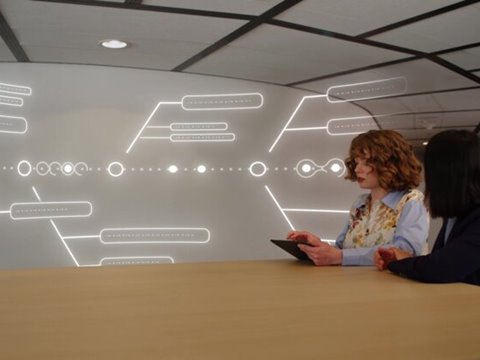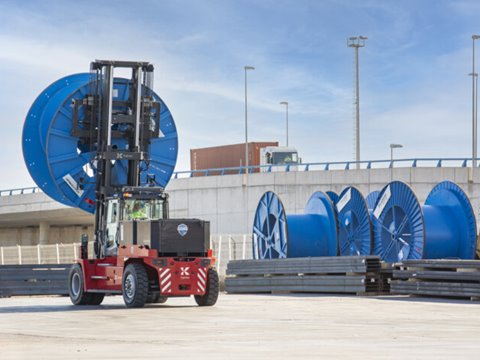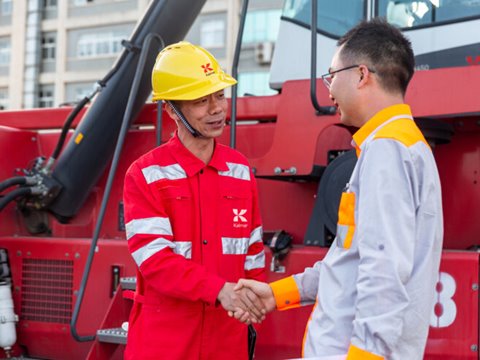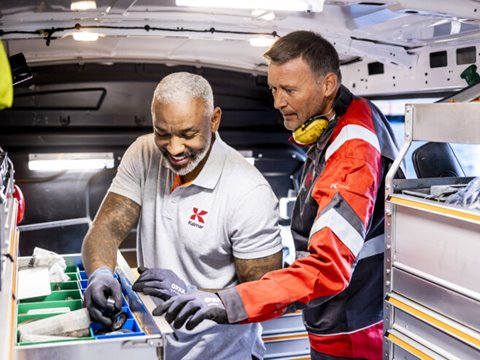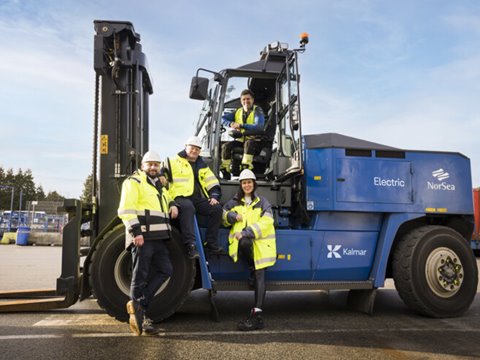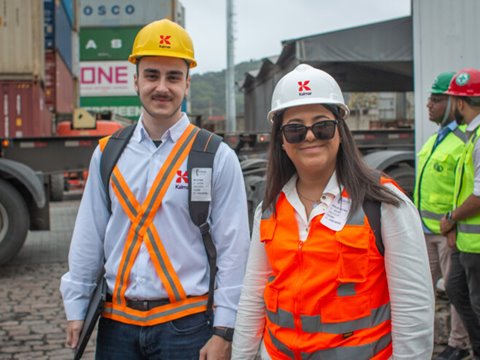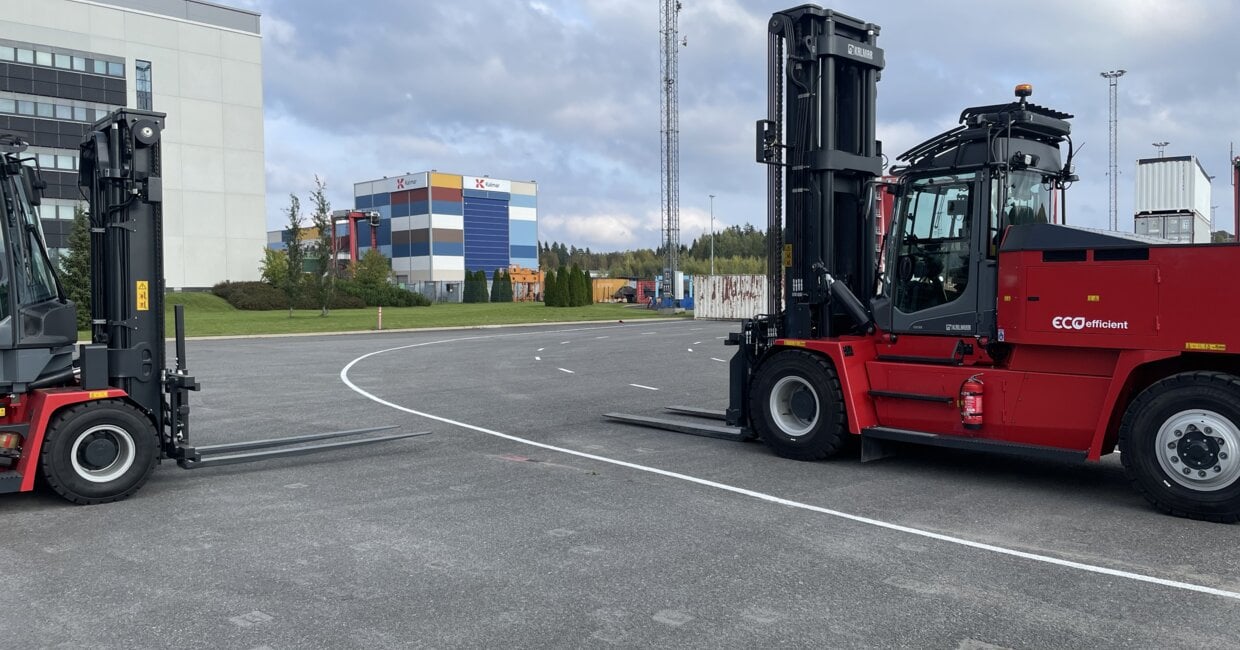
Medium Electric Forklift generates lots of buzz on the Electrifying Experience Tour
Sometimes, the best way to show the advantages of something is to just put the other person in the driver’s seat. On the Electrifying Experience tour, that is quite literally what we’re doing.
We’ve taken the Medium Electric Forklift across Spain, Finland, and the UK so that our current and future customers can get hands-on with the machine at their own worksites. In addition to cargo ports across these three countries, the tour has put the Medium Electric Forklift to the test in all kinds of operations: for a sawmill plant, an airline operator, and some construction sites.
Across these different countries and industries, we found a lot of similarities in how well the Medium Electric Forklift has been received. So, we spoke with our sales representatives on tour with the forklift to learn what exactly our customers and prospects are saying after trying it out for themselves.
Cuts fuel and maintenance costs
Regardless of your sector or industry, some things about business are fairly universal. When looking to make changes in company operations, there is one key factor that cannot be overlooked: the cost. Our regional sales representatives completely understand this, and while on the tour, they’ve been helping customers come to grips with the numbers.
“One customer was asking for the Total Cost of Ownership (TCO), and how the machine will save them money compared to diesel,” says Garry Jones, Sales Support Coordinator for UK and Ireland. To help them get a clear picture of the TCO, Garry set them up with a trial of MyKalmar INSIGHT, our performance management tool that gives customers a real-time overview of their fleet based on machine operation data. “That way, they can compare it to diesel machines and see the results themselves.”
Niko Toivo, Area Sales Manager for Finland, had a similar experience. “We’ve made TCO calculations. At some point, electric is cheaper than diesel.”
Eduardo Fernandez agrees. As a Sales Representative in Spain, he helped one prospective customer identify the point at which the electric forklift saves money. “They realised it was cheaper in the long run,” he says. “It depends on operations – if the machines are not used often, it doesn’t pay off. But if you’re using them continuously – when you get to 2,000 hours of use – electric makes sense. It can save money on fuel, and on maintenance costs, too.” The latter is particularly relevant to environments with airborne dust. “Engines get dirty,” he explains. “In this case, electric machines are better in the long term when you look at maintenance.”
No on-site emissions
As with most investments, it takes time to see a return when you replace diesel forklifts with electric ones. Some benefits, however, are immediate.
“Sometimes, the operators have to take the forklift into the premises where people are working.” The positive impact on air quality that comes from replacing diesel forklifts with electric is something that our customers can benefit from day one of operation. “Electric is better for this – you can’t use diesel in that kind of indoor environment.”
“Lots of customers are looking to reduce their CO2 impact at the moment,” Garry says. But it’s not just the driver and those on site that benefit from no emissions. “It’s also better for the surrounding area – for their neighbours.”
Comfortable and easy to use
On-site workers welcome the cleaner air quality that comes from replacing diesel forklifts with electric forklifts. Maintenance teams will also be happy to hear that electric engines aren’t as prone to getting dirty as diesel ones. We’ve got thumbs-up all around so far – but what do the drivers think?
“They love the cab,” says Garry. “There is less noise and there are less vibrations. The comfort and visibility are excellent – especially with cameras in use.” Eduardo has received the same comments in Spain. “Drivers prefer to drive electric forklifts because they’re silent.”
These comments do not come as a surprise to Niko. “The operator ergonomics are the best in the market,” he simply says. In addition, Niko has received good feedback on charging and starting up the forklifts. “They’re easy to charge – you just plug them in, and they work,” he says. “Competitor machines have startup routines – but with Kalmar machines, you just power them on and start driving – they’re very easy to use.”
Performance
The long-term cost benefits are clear, as are the more immediate benefits of reduced emissions, driver comfort and ease of use. But at the end of the day, a forklift is made to do a job. The Medium Electric Forklift combines three high-efficiency AC motors with direct drive to deliver powerful performance. But did it rise to the task on our customers’ worksites?
“All of the customers are satisfied,” Niko says. “The customers in Finland like that the performance is as good as a diesel forklift – even better, in some cases.”
Garry has seen the same thing in the UK across a wide range of use cases: moving containers, fertiliser, general goods, wood, paper, and generators. “Everyone seems happy with it at the moment, so the tour is going well.”
“Performance is good, if not better,” Eduardo echoes – he’s received the same feedback from his customers. He reflects on one customer in particular. “They handled large wind turbine sections with the electric forklift. The drivers reported that they were able to move them securely and with no problems.” One customer in Spain was so impressed with the Medium Electric Forklift that they simply kept the one that had been brought to their site as part of the tour rather than wait for a new one. We’d call that a success.
Changing to electric: a matter of “if” or “when”?
Phasing out diesel machines in favour of greener alternatives can save businesses money and improve the air quality of a work site, not to mention the impact on the environment. But going all electric requires infrastructure, and that’s probably one of the biggest hurdles for some companies right now. Nevertheless, more and more companies are deciding that now is the time to invest in that change.
“One customer is looking to install battery housing to prepare themselves for going electric in the future,” Garry says. “Another customer has already put infrastructure in. It all depends on their size, quantity of machines, and their operations.”
“One customer was planning to get the electricity from solar panels on their premises,” Eduardo says. And while that’s certainly a viable option for Spain, there’s one corner of Europe where that is perhaps less doable. “Here in Finland, it’s dark for half of the year,” Niko sighs.
“If only we could run machines on rain,” Garry muses. “We’d be okay here in the UK.”
We can’t bring the sun to Finland or run forklifts off of the British weather. But if you have questions about making the change from diesel to electric, we can definitely help you there.
Related articles
Further reading
Subscribe and receive updates in your email
Subscribe